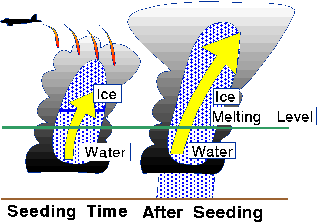
To R
 |
Introduction
To R |
> x <- scan("file1.dat")
If the numbers are separated by, for example, a comma or a blank space,
you need to inform scan() of this, otherwise numbers are assumed
to be separated by newlines:
> x <- scan("file2.dat",sep=",")
You can also read in character data, but you need to tell
scan()
about it by using the what= argument:
> c1 <- scan('chars.dat',what='')
> c1
[1] "this" "is" "some" "character" "data"
R reads each word into an element of the vector. If you want R to treat
each line as an element, then you tell
scan() that the separator
is an end-of-line character, represented by \n:
> c2 <- scan("chars.dat",what='',sep='\n')
> c2
[1] "this is some" "character data"
You can also compute the variance of a set of numbers with the var() function.
| rnorm(n,mean=0,sd=1) | Generate n numbers |
| dnorm(q,mean=0,sd=1) | Density for qth quantile |
| pnorm(q,mean=0,sd=1) | Probability for qth quantile |
| qnorm(p,mean=0,sd=1) | Quantile for probability p |
> hist(rnorm(1000)) mean 0, s.d.=1 > hist(rnorm(1000,2)) mean 2, s.d.=1 > hist(rnorm(1000,2,2)) mean 2, s.d.=2Or for more variety, random numbers from chi-squared distributions with varying degrees of freedom:
> hist(rchisq(1000,df=2)) > hist(rchisq(1000,5)) df is required arg > hist(rchisq(1000,100))
> xch <- rchisq(10000,df=2) lots of numbers > qchisq(0.95,2) whats the 95% quantile... [1] 5.991465 > sum(xch < qchisq(.95,2))/length(xch) what fraction of our data is under this.... [1] 0.9491...which seems close enough to 0.95.

To get the data click on the links, save the data, and change the paths in the examples to find the files.
| Rainfall for seeded clouds |
| Rainfall for unseeded clouds |
> unseeded <- scan("unseeded")
Read 26 items
> seeded <- scan("seeded")
Read 26 items
> par(mfrow=c(2,1)) get both plots on > hist(seeded) > hist(unseeded)This shows us how skew the numbers are. Perhaps we can make them look more normal with a log-transform:
> hist(log(seeded)) > hist(log(unseeded))Yup, thats much nicer. We should use the log-transformed data in the analysis.

The denominator is computed with:

where

Where  and
and are the means
of the two sets of numbers,
are the means
of the two sets of numbers, and
and  are the square-roots of the variances of the two sets, and
are the square-roots of the variances of the two sets, and  and
and  are the number of points in each data set.
are the number of points in each data set.
> t.test(log(seeded),log(unseeded),var.equal=T) Two Sample t-test data: log(seeded) and log(unseeded) t = 2.5444, df = 50, p-value = 0.01408 alternative hypothesis: true difference in means is not equal to 0 95 percent confidence interval: 0.2408650 2.0466972 sample estimates: mean of x mean of y 5.134187 3.990406Note how it computes the t value - this should be the same as what we computed it to be the long way...
The interesting thing here is the 95 percent confidence interval
- this tells us that the difference in means is significantly not zero
- which then tells us that maybe the cloud seeding is doing something.